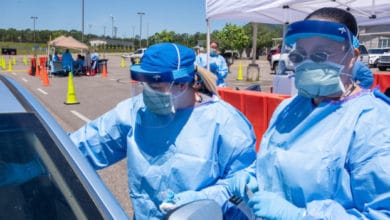RSV, the ‘tripledemic’ virus that puts babies at risk in the Americas

International Desk, Jan 11 (EFE).- Several Latin American and Caribbean countries continue to report a high number of cases of respiratory syncytial virus (RSV), the main cause of serious respiratory infections in children under one year of age, regional health sources have told EFE.
In the United States the situation is beginning to stabilize after its pediatric units became alarmingly overcrowded.
RSV is part of the current wave of respiratory viruses known as “tripledemic”, a simultaneous increase in cases of Covid-19, influenza and respiratory syncytial virus which has led health authorities in America and Europe to reinforce prevention and treatment measures, especially for children.
RSV has led to an increase in hospitalizations in countries such as Canada, Mexico, Brazil, Uruguay and the United States, mainly affecting premature babies and children under one year of age.
SYNCYTIAL VIRUS UPSURGE IN THE AMERICAS
RSV is a “very common cause of infection of the lower respiratory tract (bronchi, bronchioles and pulmonary alveoli) that can affect people of any age, but can be serious especially in infants and the elderly,” Dr. Andrea Vicari, head of the Infectious Threat Management Unit of the Pan American Health Organization (PAHO), warned EFE.
“Pneumonia and bronchiolitis constitute the leading causes of mortality among infants with RSV and the common cause of acute respiratory infection in young children,” the PAHO expert said.
In fact, a study published several months ago in The Lancet confirmed that RSV was responsible in 2019 for more than 100,000 deaths worldwide in children under five years of age, and 97% of the deaths occurred in low- and middle-income countries.
And it is premature infants, infants with chronic lung conditions (chronic lung disease or bronchopulmonary dysplasia, cystic fibrosis), congenital heart disease and immunodeficiencies who are at highest risk for complications and hospitalization due to RSV.
NORTH AMERICA AND SOUTHERN CONE, MOST AFFECTED
RSV activity normally peaks in the winter months, with a variable pattern in the tropics. However, this winter has seen a higher number of minors admitted to hospitals.
Vicari referred to the most recent PAHO data, corresponding to the epidemiological week of December 27, 2022, which indicate that in North America syncytial virus activity remained high, but was trending downwards.
In the Caribbean, the islands of Martinique and Guadeloupe reported increases in RSV; in Central America, cases increased in Guatemala, while they decreased in Panama; and in Brazil and Chile, virus activity continued to rise.
The increase has been linked to a post-pandemic phenomenon, known as “immunity debt”, after children stayed at home and limited their social interaction because of Covid-19, reducing exposure to other viruses that led to weaker defenses.
In this regard, Dr. Ruben Ruiz Santa Cruz, of the Latin American Pediatric Association (Alape) and former president of the Guatemalan Pediatric Association, explained to Efe that the alarm was triggered in the region due to the high occupancy rates in hospitals, after a rise in cases in the U.S. and South America that had not been seen during the pandemic.
“The theories point to an immunity gap because if a child has not been exposed to the virus, its immune system will obviously not respond to something it has not had contact with,” the pediatric specialist said.
ACTIONS TO BE TAKEN IN RESPONSE TO RSV
Being aware of symptoms, which include continuous coughing, wheezing, difficult breathing and fever, continues to be the cornerstone to fight RSV, as there is no vaccine approved by the regulatory authorities.
Vicari explained that most RSV infections are “self-limiting” within one to two weeks, although young infants are at greater risk of serious complications and hospitalization due to infection.
In this case, “passive immunization with monoclonal antibodies -palivizumab- is an appropriate treatment to reduce severe acute respiratory infection caused by RSV in at-risk infants,” the PAHO expert stressed.





